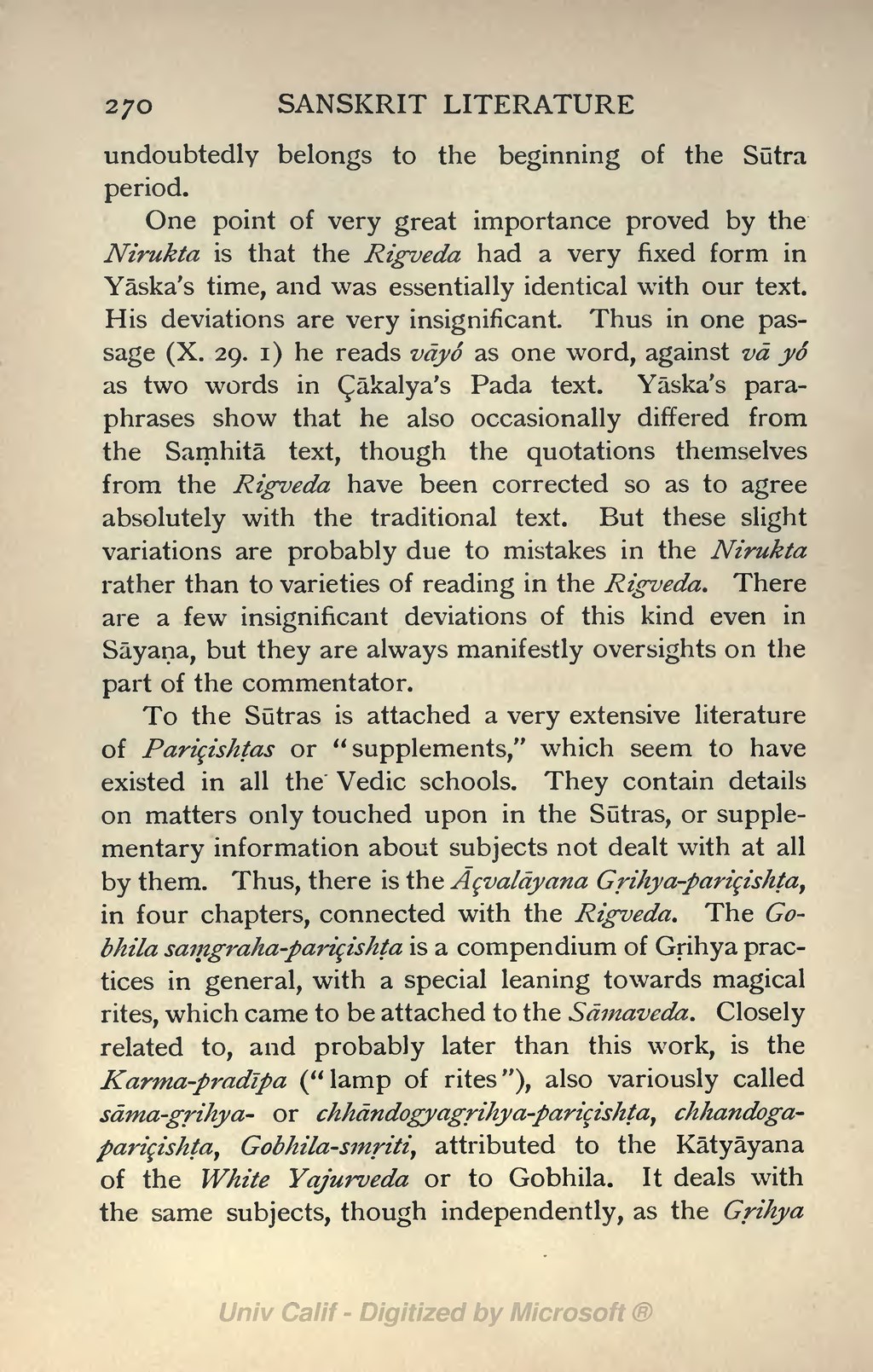undoubtedly belongs to the beginning of the Sūtra period.
One point of very great importance proved by the Nirukta is that the Rigveda had a very fixed form in Yāska's time, and was essentially identical with our text. His deviations are very insignificant. Thus in one passage (X. 29. 1) he reads vāyó as one word, against vā yó as two words in Çākalya's Pada text. Yāska's paraphrases show that he also occasionally differed from the Saṃhitā text, though the quotations themselves from the Rigveda have been corrected so as to agree absolutely with the traditional text. But these slight variations are probably due to mistakes in the Nirukta rather than to varieties of reading in the Rigveda. There are a few insignificant deviations of this kind even in Sāyaṇa, but they are always manifestly oversights on the part of the commentator.
To the Sūtras is attached a very extensive literature of Pariçishṭas or "supplements," which seem to have existed in all the Vedic schools. They contain details on matters only touched upon in the Sūtras, or supplementary information about subjects not dealt with at all by them. Thus, there is the Āçvalāyana Gṛihya-pariçishṭa, in four chapters, connected with the Rigveda. The Gobhila saṃgraha-pariçishṭa is a compendium of Gṛihya practices in general, with a special leaning towards magical rites, which came to be attached to the Sāmaveda. Closely related to, and probably later than this work, is the Karma-pradīpa ("lamp of rites"), also variously called sāma-gṛihya- or chhāndogyagṛihya-pariçishṭa, chhandoga-pariçishṭa, Gobhila-smṛiti, attributed to the Kātyāyana of the White Yajurveda or to Gobhila. It deals with the same subjects, though independently, as the Gṛihya
